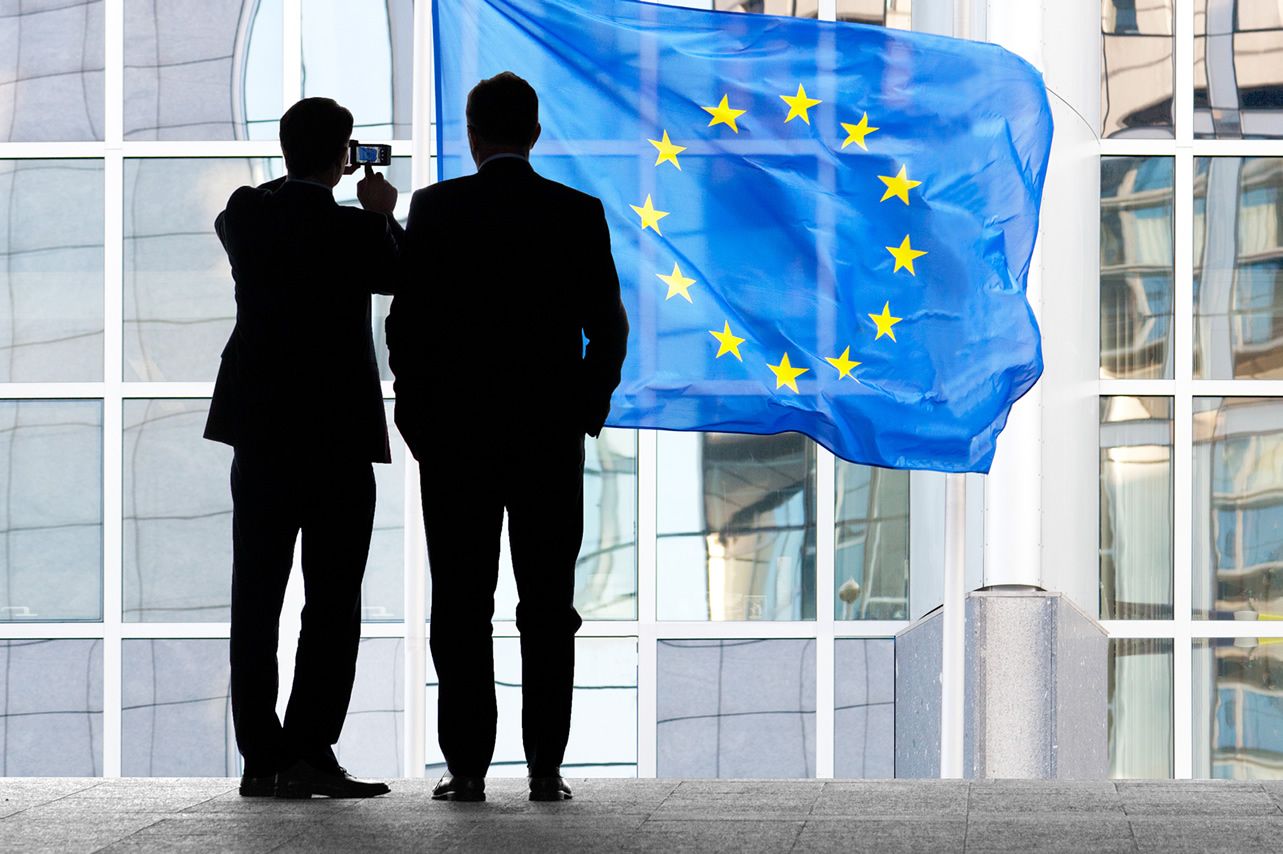Euro-to-Dollar Rate in the Week Ahead: Long-term Bear Trend Remains Deciding Factor, Trump Decision on EU Car Tariffs

Any signals this week that the U.S. will increase tariffs on EU-made vehicles is tipped to play positive for the Dollar. Image © Adobe Images
- EUR/USD reaching November lows at 1.1215
- Key make or break level - potential for losses
- Pair to be guided by tariff guidance
The technical outlook for the Euro against the Dollar is marginally bearish however this week's price action could well take a cue from U.S. President Donald Trump's guidance on whether or not he will seek to hike tariffs on EU car imports.
The EUR/USD exchange rate will be quoted at 1.1297 at market open, little changed from the previous week’s level.
The technical outlook is marginally bearish, mainly because the long-term trend is down.
Yet over the short-term the outlook is more neutral, as despite the pair falling in a short-term downtrend to the 1.12s there is a risk the pair could rebound from these levels.
The current level at the time of writing is close to the key November 2018 lows at 1.1215 and could result in a bounce higher if the Euro catches a bid or the U.S. Dollar weakens further.
For the bearish short-term trend to continue, the pair would have to break clearly below the 1.1215 lows, and the S2 monthly pivot level at 1.1190, to activate a downside target at 1.1100. A break below 1.1170 would probably provide the requisite confirmation. There is a possibility this could happen in the next 1-4 weeks. Such a move would be expected to reach 1.1100 first, followed by 1.1000 afterward.
A bullish feature of the short-term charts is the ABCD pattern which has formed on the daily chart and has an upside bias. This pattern now appears complete after wave c-d reached a similar length to wave a-b. Now that it has finished the expectation is for the pair to start rising, however, it is too early to say whether this will happen.
Time to move your money? Get 3-5% more currency than your bank would offer by using the services of foreign exchange specialists at RationalFX. A specialist broker can deliver you an exchange rate closer to the real market rate, thereby saving you substantial quantities of currency. Find out more here.
* Advertisement
The Dollar: What to Watch this Week

Image © The White House
Donald Trump will be key for the Dollar next week. We saw some market impact on the Trump's announcement on Friday that he was declaring a national emergency in order to secure funding for the building of a wall on the country's southern border.
Market attention now turns to the question of whether he will impose import tariffs on European vehicles.
"Auto tariffs are looming as the brand new report on the matter from the Commerce Department calls car imports a security threat according to several sources. This leaves Donald Trump with a three-month window to call an executive order that imposes a 25% tariff on car imports," says Andreas Steno Larsen at Nordea Markets.
Nordea Markets believe the Dollar has benefited on these expectations, and therefore we would expect the currency to benefit further if the Commerce Department do indeed confirm expectations and Trump signals an intention to impose tariffs. "What if the talk of auto-tariffs re-emerges over the next three months on the heels of the report released this weekend? Then the USD could prove stronger for longer," says Larsen.
The minutes to the Federal Reserve's most recent policy meeting will catch market attention at 19.00 GMT on Wednesday, February 20.
The Fed sets interest rates, the moves of which are a major driver of the U.S. Dollar. When rates rise - or are expected to rise in the future - it attracts greater inflows of foreign capital driving up demand for the currency in the process. A fall in rates has the opposite effect and can lead to outflows.
The Fed has adopted a more neutral stance on interest rates recently after fears U.S. economic growth has peaked. The Fed has been engaged in both interest rate increases and the process of ‘quantitative tightening’ (QT) whereby it stops reinvesting principal from expiring bonds into new bonds, and this is seen as having had a dampening effect on inflation and the economy.
The minutes will present a detailed account of the deliberations of the members of the Fed’s policy committee in relation to these concerns as well as the right Fed policy response.
It could also reveal whether they are likely to continue with a neutral stance or not. If the minutes suggest they will - as seems most likely - the Dollar could continue to trend with a subdued tone.
“Another risk for the Dollar are the FOMC minutes of the January meeting. The Federal Reserve surprised many when it seemingly ruled out a rate hike in the near term and flagged potential changes to its balance sheet unwinding plans. Should the minutes corroborate the dovish shift, the dollar could face some increased downside pressure,” says Raffi Boyadijian, currency analyst at broker XM.com.
Thursday, February 20, could also be an important day for U.S. data as it will see the release of the IHS Markit PMI sentiment surveys for manufacturing and services, existing home sales and U.S. durable goods orders.
Manufacturing PMI for February is out on Thursday at 14.45 and is forecast to show a slowdown to 54.7 from 54.9. Services, out at the same time is forecast to show a slight rise to 54.3 from 54.2.
PMIs are fairly reliable leading indicators for the economy so any surprise fluctuations could impact the outlook and the Dollar.
Durable Goods (ex. big ticket transport orders) in December, out at 13.30, is forecast to rise 0.3% from -0.3% previously.
Given recent poor data showing a slowdown in the U.S housing market, existing home sales, on Thursday at 15.00 could also be a key indicator. Currently, analysts expect a 2.2% rise after the quite severe -6.6% slump in the previous month of December.
The Euro: What to Watch this Week

Image © Adobe Images
The first main release for the Euro in the coming week is the ZEW sentiment survey on Tuesday at 10.00 GMT. The expectation is for a slight recovery in sentiment from -15 previously to -13.5 in February.
The ZEW is seen as a fairly reliable forward indicator for the wider German and Eurozone economies so a better-than-expected result could lift the single currency.
“There could be some signs that growth is steadying after months of deceleration. Germany’s ZEW sentiment survey will be the first key indicator out of Europe on Tuesday. The ZEW economic sentiment index is expected to improve marginally from -15 to -14.0 in February,” says Boyadijian.
Another important survey and leading indicator for the economy is the IHS Markit PMI survey indicator, which is out on Thursday at 9.30, and could also impact the Euro. The composite of both the manufacturing and services PMIs is forecast to fall to 50.8 from 51.0 in February.
“The manufacturing PMI is forecast to ease further to 50.3 in February, but the services PMI is anticipated to improve from 51.2 to 51.4,” says Boyadijian. If he is right the good news could stabilise the Euro.
Finally, also out on Thursday are the minutes from the European Central Bank’s (ECB) last policy meeting, and this could also be significant for the currency.
The ECB has increasingly acknowledged the weakening economic backdrop in the region in their remarks in recent weeks. However, at the last meeting, ECB head, Mario Draghi, dismissed these concerns and they had not translated into a change in ECB policy. There was no change in the guidance on interest rates as well as that a new round of TLTRO programme, as some had expected.
It could be interpreted as a dovish signal for the Euro should any evidence in the minutes show Council members discussed the issue of weakening growth to a greater degree than what Draghi let on in his press conference.
Such a sign would be expected to weigh on the Euro.
Time to move your money? Get 3-5% more currency than your bank would offer by using the services of foreign exchange specialists at RationalFX. A specialist broker can deliver you an exchange rate closer to the real market rate, thereby saving you substantial quantities of currency. Find out more here.
* Advertisement






